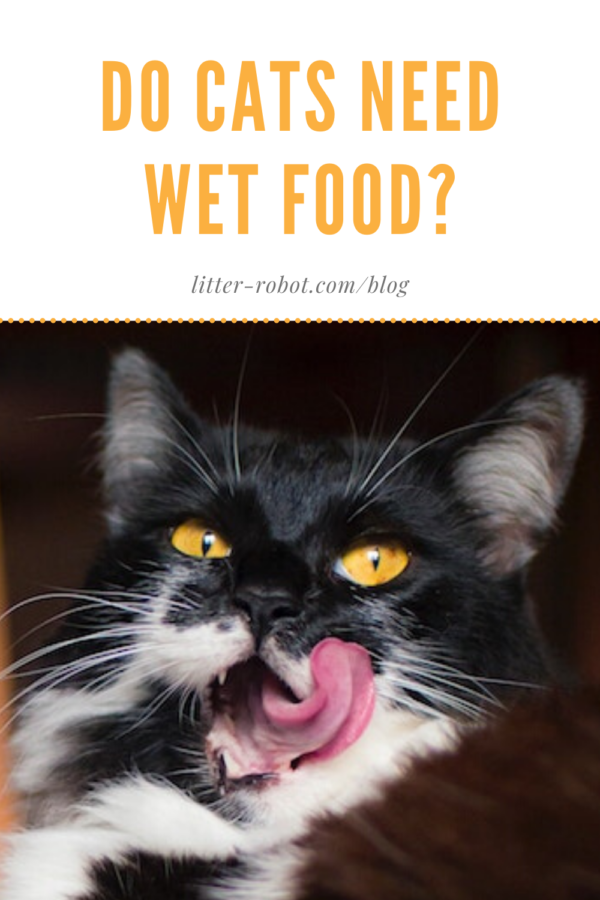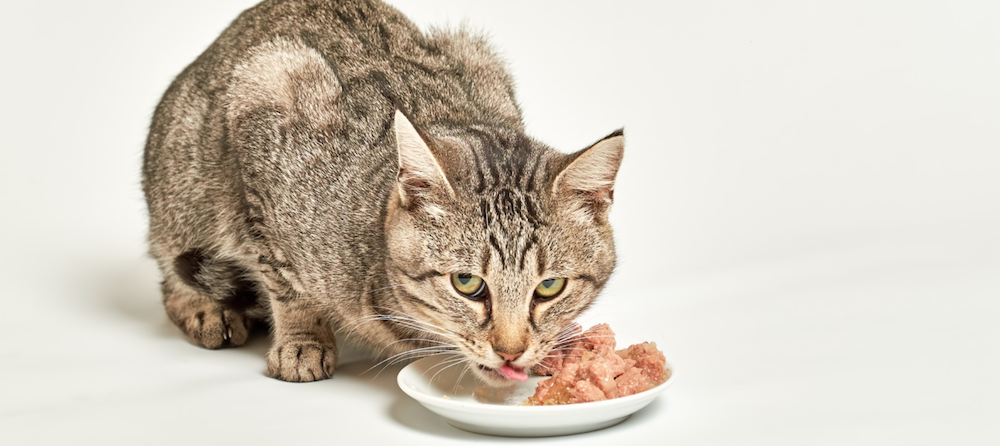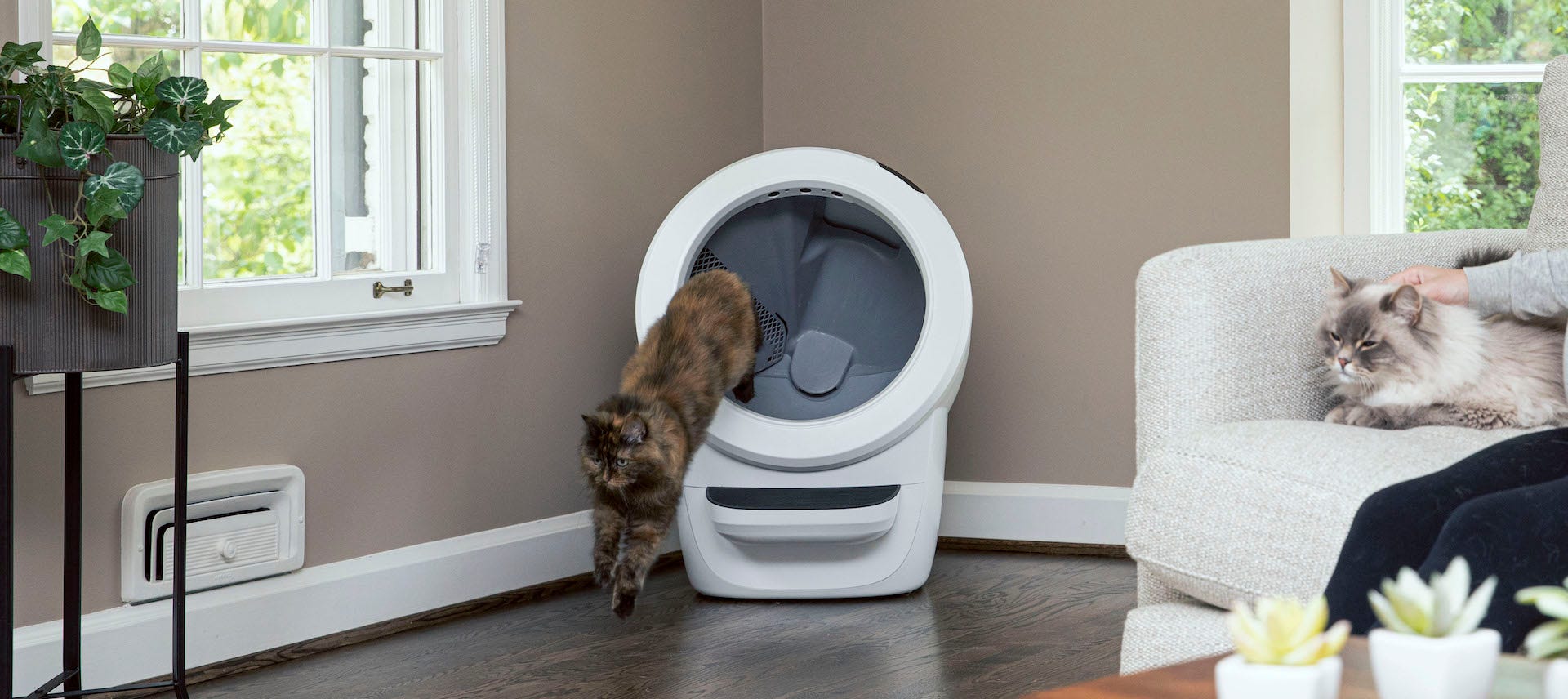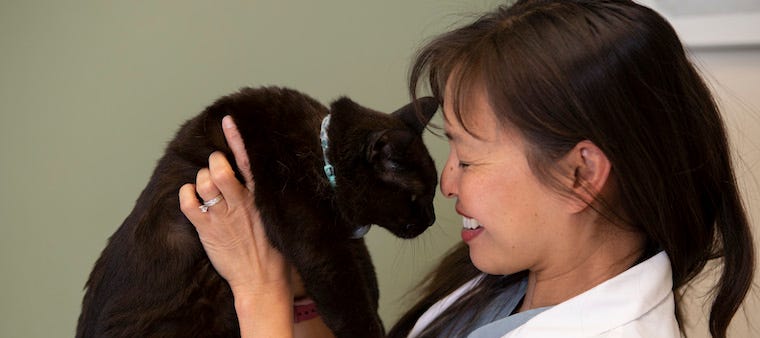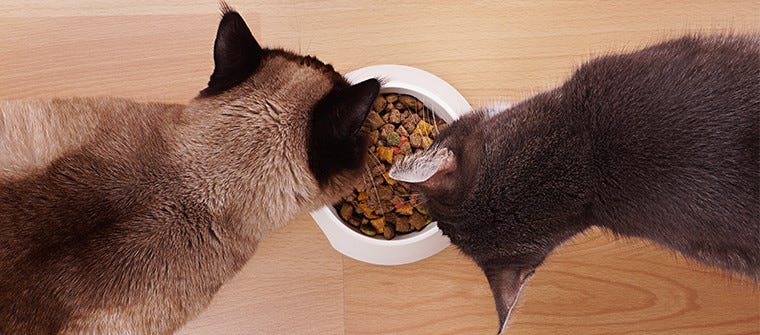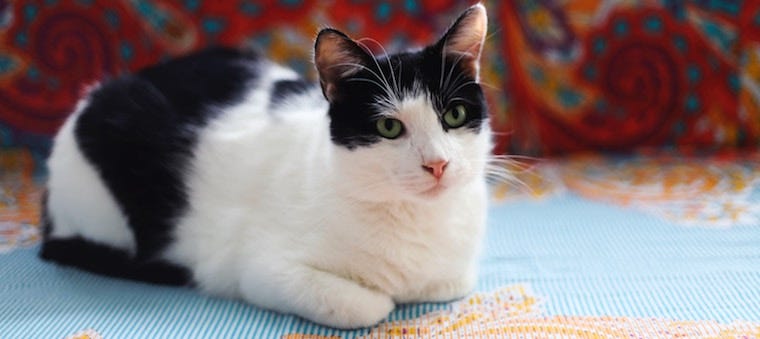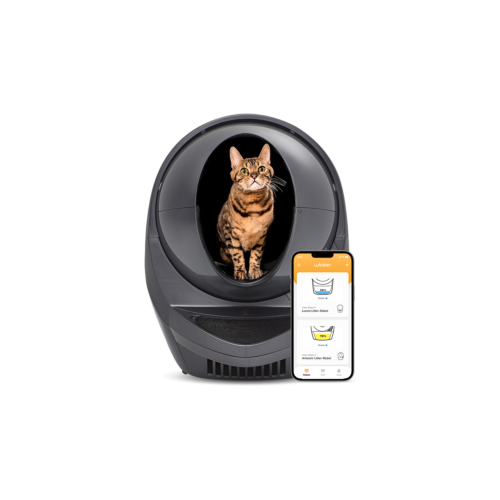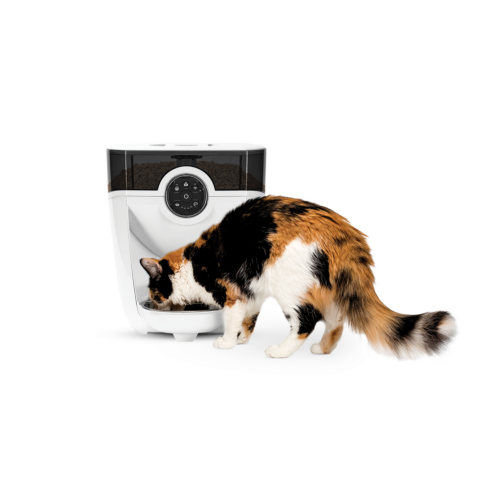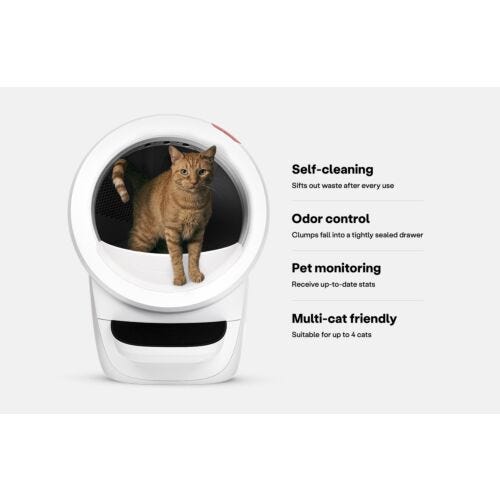Unlike dogs, domesticated cats tend to be picky about what they eat. You’ve probably heard that your cat should have some kind of canned wet food in addition to dry kibble. Some pet parents spoil their cats by feeding a strictly wet food diet, but do cats need wet food? While wet food is a good source of moisture and nutrients for your cat, there are many options to feed your cat a high-quality diet that they will love.
Do cats need wet food?
Most veterinarians will tell you that cats don’t need wet food as long as they are getting enough water as well as the right nutrients from their other food sources. However, wet food absolutely has a place in veterinary medicine and there are a lot of reasons to consider incorporating wet food into your cat’s diet.
Moisture content and hydration status
Maintaining adequate hydration in our feline friends can be difficult due to individual cat preferences. On average, cats need around one cup of water a day: more specifically, cats need 4 ounces of water per five pounds of lean body weight per day. The heavier the cat, the higher their water intake should be to accommodate their body’s needs. Aside from physically drinking water, food intake is the other main source of hydration. Canned wet food is around 80 percent water, while dry food is only about 6 to 10 percent. So if you’re concerned about your cat’s hydration status, adding in a canned diet is a great way to increase it, provided that your cat likes it. Furthermore, cats that eat wet food may drink less than cats on a strict dry food diet.
Additionally, dehydrated cats are at a higher risk of developing various urinary or kidney diseases. Canned food both promotes better hydration and dilutes urine: this helps to reduce the risk of these diseases. While urinary disease can be a consequence of chronic dehydration in all cats, male cats in particular can benefit from a wet food diet.
Lack of hydration in the diet can cause urinary crystals or stones in the urinary tract, which can lead to a life-threatening urethral obstruction. This is more common in male cats, but an important consideration for all felines.
Options for picky eaters
Many cat owners find themselves faced with a particular cat who occasionally decides that their current food isn’t doing it for them anymore. This is very common as cats are notoriously picky eaters. While the cat food market has many options in general, canned foods tend to have the most variety in both flavor and presentation. This variety typically does a better job of enticing picky eaters and ending their food strikes.
Is wet food better for cats?
Wet food is more beneficial to cats for hydration and palatability, while dry food is convenient and can be cost-effective.
Since wet cat food has a higher moisture content than dry food, it can be beneficial for cats who don't drink enough water. Adequate hydration is crucial for urinary tract health and overall well-being. In addition, wet food is often more palatable to cats due to its stronger aroma and flavor. This can be especially beneficial for cats with dental issues, picky eaters, or those with a reduced sense of smell.
However, both wet and dry cat foods can provide complete and balanced nutrition.
Some cats may have specific dietary requirements, and their nutritional needs can vary based on factors like age, health status, and lifestyle. It's essential to consider your cat's specific needs, health, and preferences.
So is wet or dry food better for cats? Wet food will usually provide better moisture content and may be more beneficial to older cats for example. While dry food can also provide satisfactory nutrition and essential nutrients, some cats can be pickier with it.
Choosing the right wet food
Not all wet food is created equal, however. Determining which wet food to buy for your cat can be daunting.
A good rule of thumb is to take a look at the ingredients and make sure that the top ingredient is some source of animal protein. Foods that list meat, meat byproducts, or seafood among the first few ingredients are more likely to supply sufficient essential amino acids and fatty acids. Some cat parents may be uncomfortable at the thought of their cats eating meat byproducts, but they are just as nutritious and part of a normal meal for cats in the wild. If that is a concern for you as a pet owner, keep an eye out for ingredients such as internal organs, blood, fatty tissue, and so on.
In reading your cat food bag or can, you should look for foods that brandish an AAFCO statement. Yes, all cat food manufacturers are required to supply certain nutritional information on the package, but those with the Association of American Feed Control Officials (AAFCO) statement are considered to be nutritionally complete and balanced.
Concerned about animal welfare? While cats should not be on vegan or vegetarian diets, you can shop for cat food brands that bear welfare certification labels—these represent more humane and transparent farming practices.
If your cat refuses to eat wet food…
If you’re giving your cat a mix of wet food and dry food but they won’t touch anything but the kibble, what do you do? Before giving up on wet food altogether, try these tips:
- Warm the wet food to a tepid temperature (check for hot spots before serving)
- Crumble some cat treats or even a tiny bit of catnip over the food to entice your cat to try it
- Sprinkle tuna juice over the food
- Mix their dry food into the wet food
- Place the wet food in a separate bowl or separate area from their regular food
If all else fails, consider purchasing a pet water fountain to encourage extra hydration in your cat’s diet. Cats tend to prefer drinking fresh, running water to the stale water sitting in their bowls. Make sure they have regular water bowls with frequently refreshed water, as well.
If your cat throws up after eating wet food…
Does your cat love wet food, but you’ve given up on feeding it to them because they always seem to throw it up? If your cat throws up after eating wet food, it could be for one of these reasons:
- Eating too fast: Wet food doesn’t require as much time chewing as dry food, so your cat may be consuming too much, too fast—also known as the “scarf and barf.” Try giving them a smaller amount of food at a time, more times a day, or mixing in some dry food to slow down their eating process.
- Low-quality: The wet food your cat is eating may have low-quality or inappropriate ingredients. Consult with your veterinarian for food recommendations to find a fit that is high quality.
- It’s cold: Eating cold wet food may also upset your cat’s stomach. Make sure the wet food is at room temperature.
- Running around: Your cat may also be running around right after they eat wet food, which could lead to an upset stomach. Try to keep them in one room to avoid these zoomies, and pet or hold them to distract them for a few minutes.
- Sensitive stomach: The wet food may have high-quality ingredients, but one of the ingredients bothers your cat’s stomach. Try a variety of meats (chicken, salmon, etc.) and styles (gravy, paté, broth, etc.) to determine if one of these works for them.
- Symptoms of underlying illness: If all else fails, schedule an appointment with your veterinarian so that they can evaluate your cat and determine if there is a bigger issue causing your cat to not be able to keep the wet food down.
How long can wet cat food sit out?
Wet cat food should sit out a maximum of 1-2 hours at room temperature. If the room is particularly warm, move leftovers to the fridge within 30 minutes. Any longer than these time frames may result in spoiled food, which could lead to upset stomach or even food poisoning in your cat. Any remaining wet food should be stored in the refrigerator and used ideally within 48 hours.
Cats can benefit from eating on a schedule, so if you find that your cat is not eating their food within the recommended time frame, establish a routine of the food only being available for a specific amount of time. This will encourage your cat to prioritize eating and get them on a schedule. You can either create recurring reminders at set times or look for an automatic cat food dispenser.
So, do cats need wet food? They absolutely need water and wet food has a lot of water content! Now you know why it’s a good idea to feed your cat both wet food and dry food!
Sources:
- Canned or dry food: What’s better for cats?
- Hydration
- Putting Cats on the Path to Good Hydration with Dr. Andrew Sparkes | VETgirl Veterinary Continuing Education Blog
- Feeding Your Cat
